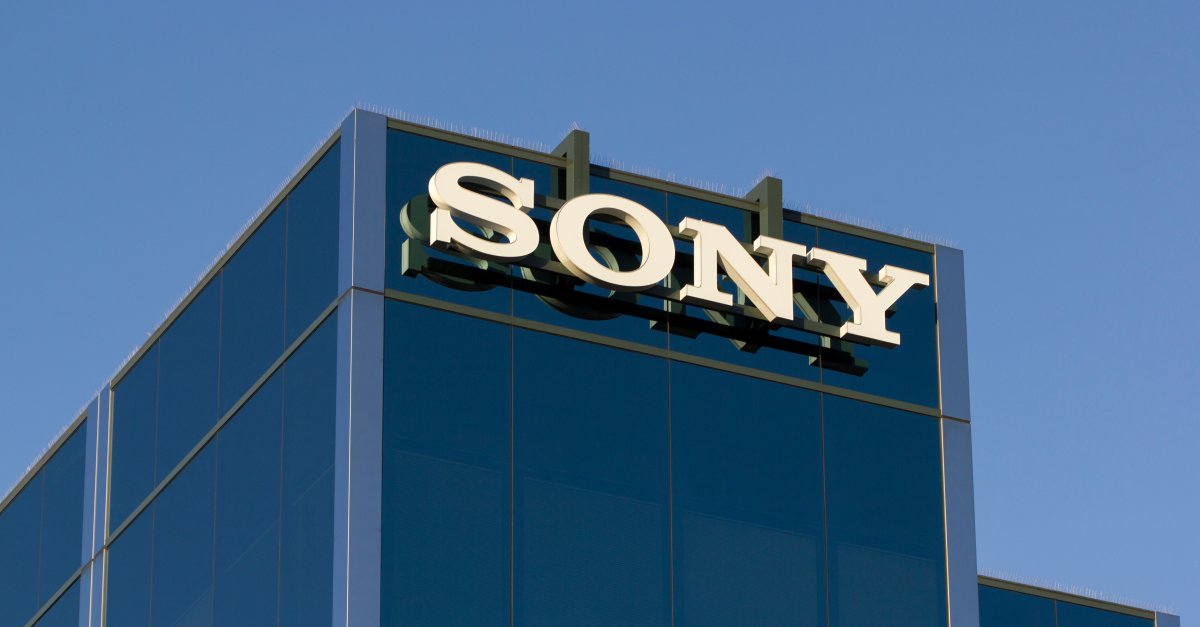

Finance
What Does The Optimal Capital Structure Do
Published: December 24, 2023
Discover how an optimal capital structure can enhance financial performance and stability. Explore the impact of finance on establishing the ideal balance of debt and equity.
(Many of the links in this article redirect to a specific reviewed product. Your purchase of these products through affiliate links helps to generate commission for LiveWell, at no extra cost. Learn more)
Table of Contents
- Introduction
- What is Capital Structure?
- Importance of Optimal Capital Structure
- Factors Influencing Capital Structure
- Benefits of Optimal Capital Structure
- Challenges in Achieving Optimal Capital Structure
- Strategies for Achieving Optimal Capital Structure
- Case Studies of Companies with Effective Capital Structures
- Conclusion
Introduction
“What does the optimal capital structure do?” This question often perplexes finance professionals and business owners alike. The capital structure of a company plays a crucial role in its financial health and long-term success. It encompasses the mix of debt and equity financing that a company utilizes to fund its operations and investments.
Having an optimal capital structure is important because it can significantly impact a company’s profitability, risk profile, and ability to grow. Striking the right balance between debt and equity financing is crucial as it can determine a company’s ability to meet its financial obligations and maximize returns for its shareholders.
However, achieving an optimal capital structure is not a one-size-fits-all approach. It varies across industries, business models, and economic conditions. Multiple factors need to be considered to determine the most effective capital structure for a company.
In this article, we will explore the concept of capital structure, its importance, and the factors influencing it. We will also delve into the benefits of having an optimal capital structure and the challenges companies face in achieving it. Additionally, we will discuss various strategies that can be adopted to achieve an optimal capital structure, citing case studies of companies that have successfully implemented them.
By the end of this article, you will have a clearer understanding of what the optimal capital structure does and how it can contribute to the financial success of a company.
What is Capital Structure?
Before we explore the concept of optimal capital structure, it is important to understand what capital structure entails. In simple terms, capital structure refers to the way a company finances its operations and investments through a combination of debt and equity.
Debt financing involves borrowing money from external sources, such as banks or bondholders, which needs to be repaid over a specific period of time with interest. Equity financing, on the other hand, involves raising funds by selling ownership shares of the company to investors, who become shareholders and have a claim on the company’s profits and assets.
A company’s capital structure is determined by the proportion of debt and equity used to finance its activities. This proportion can have a significant impact on various aspects of the company’s operations, including its risk level, cost of capital, and ability to pursue growth opportunities.
There are different forms of debt and equity financing that companies can utilize to create their capital structure. Debt financing options include bank loans, corporate bonds, and lines of credit, while equity financing options include issuing common or preferred shares.
It is important to note that there is no one-size-fits-all capital structure that is optimal for every company. The ideal capital structure depends on various factors, including the industry in which a company operates, its growth stage, its financial position, and its risk appetite.
Companies in different industries may have varying levels of debt in their capital structure. For instance, capital-intensive industries like manufacturing or infrastructure may rely more on debt financing due to the need to fund expensive assets and projects. On the other hand, technology startups or high-growth companies may rely more on equity financing to fuel their expansion plans.
Overall, understanding and managing the capital structure of a company is essential for financial decision-making and ensuring long-term sustainability. It involves evaluating the risk and return trade-offs associated with different financing options, maintaining a balance between debt and equity, and considering the company’s unique characteristics and goals.
Importance of Optimal Capital Structure
The optimal capital structure is crucial for the financial health and success of a company. It plays a pivotal role in determining the company’s ability to generate profits, manage risks, and pursue growth opportunities. Here are some reasons why having an optimal capital structure is important:
- Maximizing Profitability: The capital structure of a company can impact its profitability. By maintaining an optimal mix of debt and equity financing, a company can achieve a balance between the cost of capital and the returns on investments. This balance helps in maximizing profits and shareholder value.
- Managing Risk: The capital structure can influence the risk profile of a company. Too much debt can increase the financial risk, as the company needs to make regular interest and principal payments. On the other hand, a higher proportion of equity financing can reduce the risk but may dilute the ownership stake of existing shareholders. Striking an optimal balance between debt and equity helps in managing risk effectively.
- Access to Capital: An optimal capital structure enhances a company’s credibility and ability to raise capital. Lenders and investors are more inclined to provide funding to companies with a well-structured and balanced capital mix. This access to capital enables companies to seize growth opportunities, invest in research and development, and expand their operations.
- Flexibility and Adaptability: The optimal capital structure provides companies with the flexibility to adapt to changing market conditions and business needs. With a diverse mix of financing options, companies can adjust their capital structure as per evolving industry trends, regulatory requirements, and economic conditions.
- Tax Benefits: The capital structure can also have tax implications for a company. Interest payments on debt are tax-deductible, which can provide tax advantages and lower the overall tax liability. By strategically utilizing debt in the capital structure, companies can optimize their tax position and enhance cash flow.
It is important to note that the optimal capital structure may evolve over time as the company’s financial needs and market conditions change. Regular evaluation and adjustment of the capital structure is necessary to ensure alignment with the company’s objectives and optimal utilization of resources.
Factors Influencing Capital Structure
The capital structure of a company is influenced by various factors that need to be considered when determining the optimal mix of debt and equity financing. Understanding these factors is crucial for making informed decisions about the capital structure. Here are some key factors that influence the capital structure:
- Business Risk: The level of business risk associated with a company’s operations has a significant impact on its capital structure. Companies operating in volatile industries or facing uncertain market conditions may prefer a lower debt-to-equity ratio to reduce financial risk. Conversely, companies in stable industries with predictable cash flows may be more comfortable taking on higher levels of debt.
- Financial Flexibility: The financial flexibility of a company, including its ability to generate consistent cash flows and maintain a healthy balance sheet, plays a role in determining the capital structure. Companies with strong cash flows and low financial leverage have more options to choose from when it comes to capital structure, as they may have more access to debt or equity financing.
- Growth Opportunities: The growth prospects and investment opportunities available to a company impact its capital structure decisions. Companies that anticipate significant growth or have expansion plans may choose to rely on equity financing to fund their investments. Conversely, companies with limited growth opportunities may opt for debt financing to avoid dilution of ownership.
- Cost of Capital: The cost of capital, which includes the cost of debt and equity, influences the capital structure. Companies strive to minimize their overall cost of capital while balancing the risk and return trade-offs. If debt is cheaper and readily available, a company may choose to utilize more debt financing. However, if the cost of equity is more attractive, the company may opt for equity financing.
- Industry Norms: The capital structure of a company is also influenced by industry norms and standards. Different industries may have different expectations and standards when it comes to debt-to-equity ratios. Companies often compare their capital structure to industry benchmarks to ensure they are in line with market expectations.
- Tax Considerations: Tax considerations are an important factor in capital structure decisions. Interest payments on debt are tax-deductible, while dividends on equity are not. This tax advantage makes debt financing more attractive from a cost perspective. However, companies must also consider the potential risks associated with higher levels of debt and the impact of changes in tax regulations.
It is important to note that these factors are interconnected and must be analyzed in conjunction with each other. Companies need to conduct thorough financial analysis and evaluate various scenarios to determine the most appropriate and efficient capital structure for their specific circumstances.
Benefits of Optimal Capital Structure
Having an optimal capital structure can provide numerous benefits to a company. It not only contributes to its financial stability but also enhances its ability to thrive in the competitive business landscape. Here are some key benefits of achieving an optimal capital structure:
- Enhanced Financial Performance: An optimal capital structure helps in maximizing the financial performance of a company. By balancing the proportion of debt and equity financing, companies can reduce their cost of capital and increase their profitability. This enables the company to generate higher returns for its shareholders.
- Improved Risk Management: Maintaining an optimal capital structure allows companies to effectively manage their risk exposure. By balancing debt and equity financing, companies can mitigate the risk associated with excessive debt levels while still capitalizing on the benefits of leveraging. This provides greater stability and resilience in the face of economic uncertainties.
- Enhanced Creditworthiness: A well-structured and balanced capital structure enhances a company’s creditworthiness. With a lower risk profile and better management of financial obligations, companies are more likely to receive favorable terms on loans and other forms of credit. This increases their borrowing capacity and provides access to funding for future investments.
- Flexibility for Growth: An optimal capital structure provides companies with the flexibility to pursue growth opportunities. Companies with well-managed debt levels can leverage their resources to invest in new projects, expand their operations, or enter new markets. This flexibility allows companies to adapt to changing market conditions and capitalize on potential growth prospects.
- Improved Cash Flow: Maintaining an optimal capital structure helps in optimizing cash flow. By carefully managing debt-repayment schedules and interest payments, companies can improve their cash flow position and ensure sufficient funds are available for ongoing operations and future investments. This strengthens the financial sustainability of the company.
- Enhanced Shareholder Value: A company with an optimal capital structure is better positioned to create value for its shareholders. By efficiently allocating capital, reducing costs, and optimizing returns, companies can increase their shareholder value over time. This, in turn, attracts more investors and strengthens the company’s overall financial standing.
Overall, an optimal capital structure is a critical component of a company’s financial success. It enables companies to effectively manage risks, capitalize on growth opportunities, and create long-term value for their stakeholders.
Challenges in Achieving Optimal Capital Structure
While achieving an optimal capital structure is desirable for companies, it is not without its challenges. Several factors and obstacles can hinder companies from attaining the ideal balance between debt and equity financing. Here are some common challenges faced in achieving optimal capital structure:
- Market Conditions: External factors such as economic conditions, interest rates, and investor sentiment can pose challenges in determining the optimal capital structure. Volatile market conditions may limit access to debt financing or increase borrowing costs, forcing companies to rely more on equity financing or face higher levels of financial risk.
- Industry Characteristics: Different industries have distinct capital structure requirements, influenced by factors such as asset intensity, market volatility, and regulatory environment. Determining the optimal capital structure may be challenging for companies operating in complex or highly regulated industries, as they need to balance industry norms with their specific financial needs.
- Financial Health: The financial health and creditworthiness of a company play a crucial role in achieving an optimal capital structure. Companies with poor financial performance, high levels of debt, or a weak credit rating may face difficulties in accessing favorable financing options, limiting their ability to reach the desired capital structure.
- Investor Preferences: Companies need to align their capital structure decisions with the preferences of their shareholders and potential investors. If shareholders prefer a more conservative capital structure, it may limit the company’s ability to take on additional debt or dilute equity. Balancing the expectations of various stakeholders can be challenging, especially in situations where the company needs to raise capital quickly.
- Strategic Considerations: Companies often face strategic considerations that can impact their capital structure decisions. For example, mergers and acquisitions, diversification, or entry into new markets may require significant capital investment and can affect the optimal debt-to-equity mix. Companies need to analyze such strategic moves and align their capital structure accordingly.
- Tax and Legal Constraints: Tax regulations and legal constraints can also pose challenges in achieving an optimal capital structure. Changes in tax laws or stricter regulations may impact the tax advantages associated with debt financing or restrict the usage of specific financing options. Companies need to carefully navigate these constraints to ensure compliance while structuring their capital appropriately.
Overcoming these challenges requires careful analysis, financial expertise, and strategic decision-making. It is essential for companies to regularly evaluate their financial position, industry dynamics, and market conditions to make informed choices about their capital structure.
Strategies for Achieving Optimal Capital Structure
Achieving an optimal capital structure is a critical goal for companies looking to optimize their financing mix and maximize their financial performance. While the ideal capital structure differs for each company, there are some common strategies that can help in achieving it. Here are some effective strategies for achieving optimal capital structure:
- Financial Analysis: Conduct a thorough financial analysis to assess the company’s current capital structure and evaluate its impact on profitability, risk, and cash flow. Identify areas that require adjustment and understand the key drivers influencing the capital structure.
- Debt Management: Evaluate the company’s debt position and explore opportunities for debt optimization. This may involve refinancing existing debt at more favorable interest rates, extending maturities to improve cash flow, or negotiating better terms with lenders. Consider the company’s risk tolerance and cash flow capabilities when determining the appropriate level of debt.
- Equity Financing: Assess the potential for equity financing to strengthen the company’s capital structure. Evaluate options such as stock offerings, private placements, or strategic partnerships to raise additional equity capital. Carefully consider the dilution of ownership and the preferences of existing shareholders.
- Cash Flow Management: Improve cash flow management to have more flexibility in achieving the optimal capital structure. Implement effective working capital management strategies, such as optimizing inventory levels, improving accounts receivable and accounts payable processes, and fostering strong relationships with customers and suppliers.
- Dividend Policy: Review the company’s dividend policy and dividend payout ratios. Adjusting the dividend policy can impact the availability of funds for debt repayment or new investments. A conservative dividend policy may free up cash for debt reduction, while a more aggressive policy may attract equity investors.
- Asset Optimization: Assess the company’s asset base and identify opportunities for asset optimization. This may involve divesting non-core assets or utilizing asset-backed financing to unlock capital for debt reduction or strategic investments.
- Capital Structure Targets: Set clear capital structure targets based on the company’s financial goals, industry benchmarks, and market conditions. Regularly review and adjust these targets to ensure alignment with the company’s evolving needs and risk appetite.
- Constant Evaluation: Continuously evaluate and monitor the company’s capital structure to ensure it remains aligned with the changing business environment. Regularly assess the impact of market conditions, regulatory changes, and industry trends on the company’s capital structure decisions.
Implementing these strategies requires robust financial planning, in-depth analysis, and a comprehensive understanding of the company’s objectives and risk tolerance. Collaborating with financial advisors and experts can provide valuable insights and guidance throughout the process of achieving and maintaining an optimal capital structure.
Case Studies of Companies with Effective Capital Structures
Examining successful companies that have achieved optimal capital structures can provide valuable insights and real-world examples of effective capital management strategies. Here are two case studies of companies that have demonstrated effective capital structures:
Case Study 1: Apple Inc.
Apple Inc., a leading technology company, has mastered the art of capital structure optimization. Over the years, Apple has struck a balance between debt and equity financing to maximize profitability and shareholder value.
One key strategy Apple has implemented is utilizing its strong cash flow position to fund operations and investments internally. By doing so, it has minimized the need for external financing. During periods when interest rates were low, Apple took advantage of the favorable conditions and issued bonds to finance strategic initiatives and share repurchases. This allowed the company to benefit from the interest tax shield while maintaining its cash reserves.
Furthermore, Apple made strategic use of its overseas cash holdings to repatriate funds in a tax-efficient manner. This enabled the company to access additional capital for dividends, stock buybacks, and acquisitions, further enhancing shareholder value.
By carefully managing its capital structure, Apple has ensured financial stability and flexibility while consistently delivering strong financial performance.
Case Study 2: Toyota Motor Corporation
Toyota Motor Corporation, a global automobile manufacturer, demonstrates an effective capital structure that balances financial risk and growth opportunities.
Toyota relies on a conservative capital structure characterized by a low debt-to-equity ratio. This helps the company manage risk and ensure financial stability, particularly during economic downturns or industry-specific challenges. Toyota’s focus on maintaining a strong balance sheet has played a crucial role in its resilience, enabling the company to weather market uncertainties and sustain long-term growth.
In addition, Toyota’s capital structure facilitates its commitment to innovation and sustainable growth. The company allocates capital towards research and development, product diversification, and environmental initiatives. By leveraging its strong financial position and access to funds, Toyota has been able to invest in cutting-edge technologies and maintain a competitive edge in the automotive industry.
Toyota’s effective capital structure management has not only supported its financial performance but also positioned the company as a leader in the global automotive market.
These case studies highlight the importance of tailored capital structure strategies that align with a company’s unique characteristics, risk profile, and long-term objectives. By examining successful companies like Apple Inc. and Toyota Motor Corporation, businesses can draw inspiration and insights to develop and implement their own optimal capital structures.
Conclusion
Optimizing the capital structure is a fundamental aspect of financial management for companies across industries. It involves finding the right balance between debt and equity financing to maximize profitability, manage risks, and seize growth opportunities. While the optimal capital structure varies for each company, there are key principles and strategies that can guide businesses in achieving this goal.
Throughout this article, we have explored the concept of capital structure, its importance, and the factors that influence it. We have discussed the benefits of having an optimal capital structure, such as enhanced financial performance, improved risk management, and increased access to capital. We have also examined the challenges companies face in achieving an optimal capital structure and explored strategies that can help overcome these challenges.
Furthermore, we have looked at case studies of companies like Apple Inc. and Toyota Motor Corporation that have effectively managed their capital structures to achieve financial success and strategic growth. These case studies provide valuable real-world examples of how companies can navigate various factors and design capital structures that align with their objectives.
In conclusion, achieving an optimal capital structure requires careful analysis, strategic planning, and continuous evaluation. Companies must consider their industry dynamics, financial health, market conditions, and investor preferences when shaping their capital structures. By effectively managing debt, equity, and cash flow, companies can position themselves for sustainable growth, improved financial performance, and increased shareholder value.
As businesses continue to evolve and adapt to changing market conditions, the importance of optimal capital structure remains paramount. By understanding the concepts and strategies discussed in this article, companies can make informed decisions about their capital structures and position themselves for long-term success in the dynamic world of finance.














